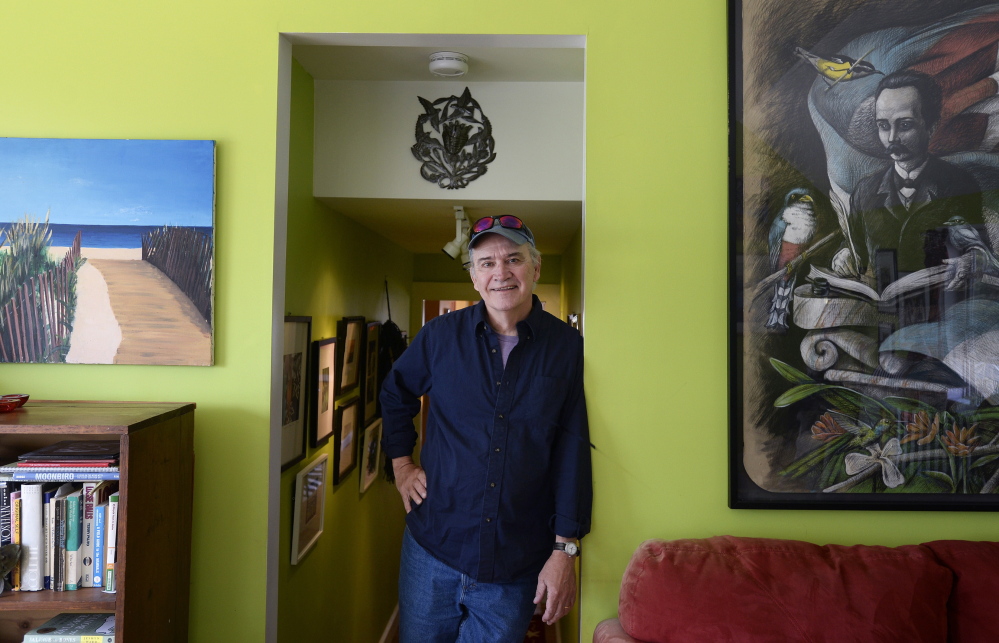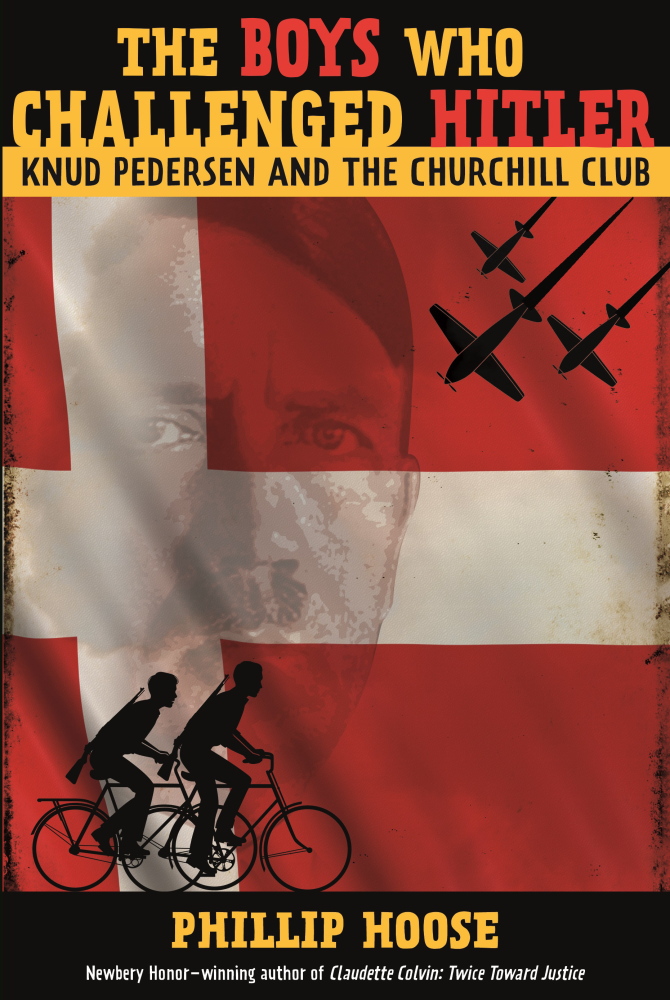The Portland writer Philip Hoose attributes his interest in the lives of youngsters who achieve remarkable things to his daughters, Hannah and Ruby. Growing up, the girls participated in activities that involved social action and awareness. Impressed, Hoose has dedicated much of his professional work since to telling stories about kids whose actions helped shaped history.
His work resulted in a National Book Award for “Claudette Colvin: Twice Toward Justice,” the story of one young woman’s resistance of Jim Crow segregation, and a National Book Award nomination for “We Were There Too!” a collection of stories about kids who acted with maturity and bravery beyond their years.
He continues his stories about high-achieving kids with “The Boys Who Challenged Hitler: Knud Pedersen and the Churchill Club.”
Farrar, Straus and Giroux releases the young-reader title this week, and Hoose will talk about it at 5 p.m. Saturday at Longfellow Books in Portland and 4 p.m. May 23 at Gulf of Maine Books in Brunswick.
It’s the story of Knud Pedersen and his bicycle-riding gang of teenage buddies who harassed and pestered German soldiers after they invaded Denmark in April 1940. Pedersen, 14, was outraged that his king and countrymen did little to resist the Nazis. They formed a roving band of resisters and named their club after the British leader, whom they admired. Traveling on bikes and fueled by gumption, they stole guns, snipped communication wires and started fires in an attempt to disrupt the routines of the Germans.
They were eventually caught, and Pedersen and his brother were imprisoned more than 2 years.
“They risked their lives again and again,” Hoose said. “But they were embarrassed by their country’s lack of response. There was no one to prepare them and no one to train them. Knud told me he would have seen himself as a peace activist, but this time he was moved to fight.”
Denmark eventually did resist the Nazis, but many were embarrassed that it took the arrest of teenagers to spark widespread resistance.
Pedersen alive when Hoose began his research, and a willing subject. Pedersen died last December at age 89, just as Hoose was finishing the project. He is buried a national hero in Copenhagen’s Assistens Cemetery among such other Danish figures as Hans Christian Andersen and Soren Kierkegaard.
Hoose admits, he got lucky.
“I found a protagonist who remembered things both factually and emotionally. He could tell what happened and when, and how it felt,” he said.
Hoose lucked out in another way. He first heard Pedersen’s story in 2000 during a previous trip to Copenhagen when he visited the Museum of Danish Resistance. The museum told the story of what would become Denmark’s famous resistance to the Germans, and it includes a brief display about the Pedersen and the Churchill Club.
A curator at the museum gave him Pedersen’s email address, but Hoose was too late. Pedersen had committed his story to another writer.
A decade passed, and Pedersen’s story remained largely untold. In 2012, Hoose wrote again.
Pedersen’s reply was quick and to the point: “When can you be in Copenhagen?”
A few months later, Hoose arrived in Denmark. Pedersen met him at airport. “There he was, a beautiful head of hair. His bearing was theatrical. There was no question who he was in the room,” Hoose said.
Hoose spent most of the next week documenting Pedersen’s story. When he returned to the Maine, Hoose remained in near-daily contact with via email over the next year-plus.
When the emails slowed this past December, Hoose feared Pedersen’s demise. He died Dec. 18.
That Pedersen died a hero in the eyes of his countrymen says much about the impact of his actions, Hoose said.
“Knud and his friends awakened the Danish public,” he said.
Copy the Story LinkSend questions/comments to the editors.





Success. Please wait for the page to reload. If the page does not reload within 5 seconds, please refresh the page.
Enter your email and password to access comments.
Hi, to comment on stories you must . This profile is in addition to your subscription and website login.
Already have a commenting profile? .
Invalid username/password.
Please check your email to confirm and complete your registration.
Only subscribers are eligible to post comments. Please subscribe or login first for digital access. Here’s why.
Use the form below to reset your password. When you've submitted your account email, we will send an email with a reset code.